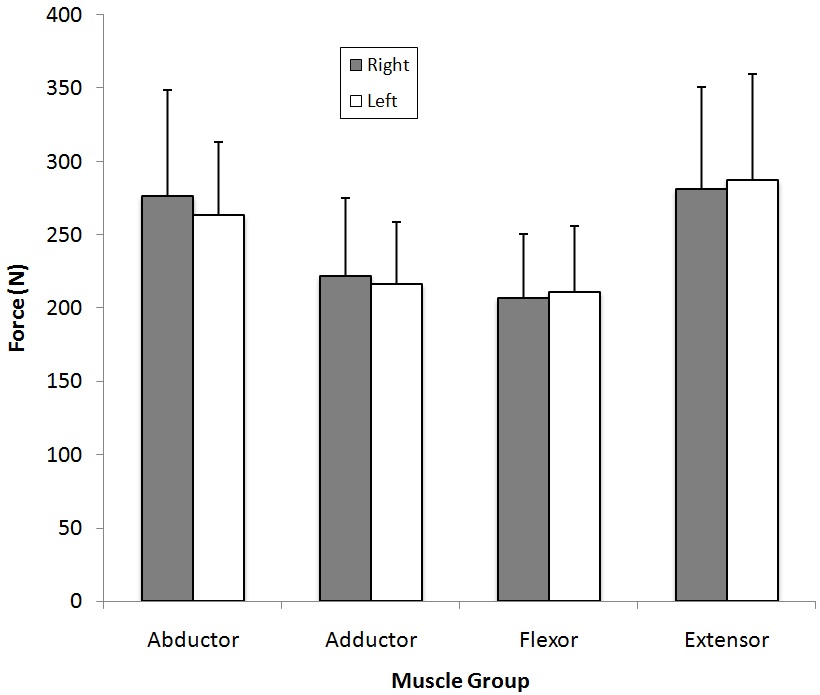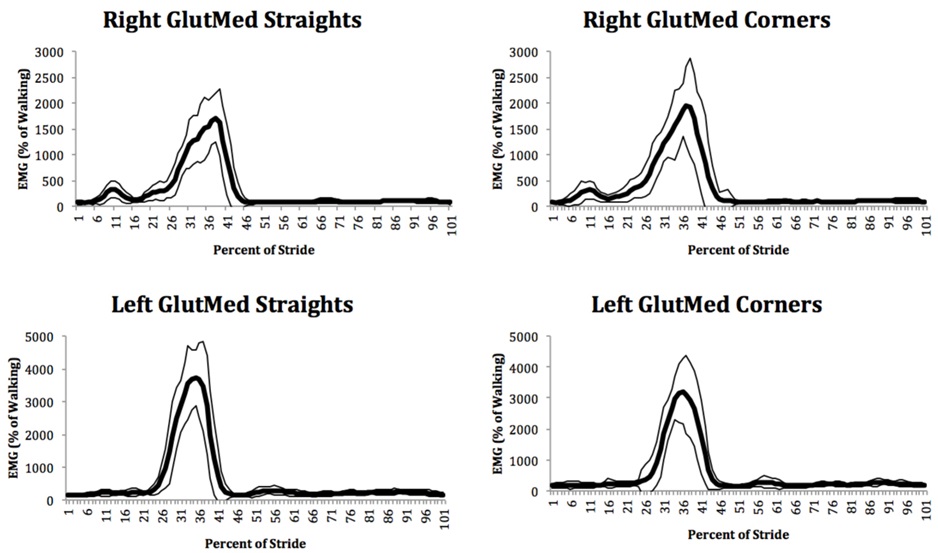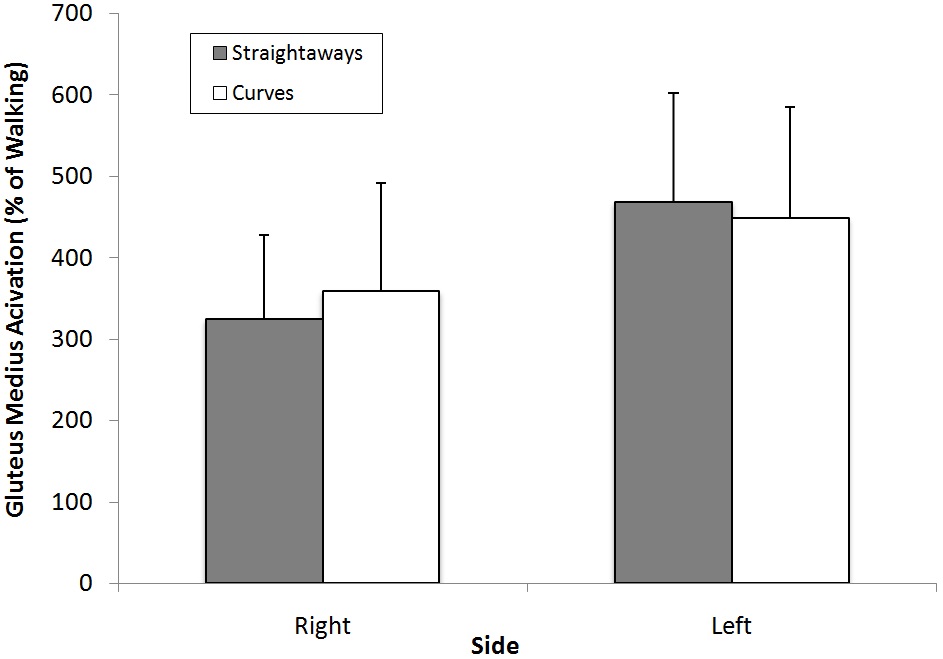1. Novacheck TF. The biomechanics of running. Gait Posture. 1998; 7: 77-95. doi: 10.1016/S0966-6362(97)00038-6
2. Nicola TL, Jewison DJ. The anatomy and biomechanics of running. Clin Sports Med. 2012; 31: 187-201. doi: 10.1016/j.csm.2011.10.001
3. Robbins SE, Hanna AM. Running-related injury prevention through barefoot adaptations. Med Sci Sports Exerc. 1987; 19: 148-156. doi: 10.1249/00005768-198704000-00014
4. Scott SH, Winter DA. Internal forces of chronic running injury sites. Med Sci Sports Exerc. 1990; 22: 357-369.
5. Edouard P, Alonso J-M. Epidemiology of Track and Field Injuries. New Studies in Athletics. 2013; 28: 85-92.
6. Feddermann-Demont N, Junge A, Edouard P, Branco P, Alonso J-M. Injuries in 13 international Athletics championships between 2007-2012. Br J Sports Med. 2014; 48: 513-522. doi: 10.1136/bjsports-2013-093087
7. Bennell KL, Crossley K. Musculoskeletal injuries in track and field: incidence, distribution and risk factors. Aust J Sci Med Sport. 1996; 28: 69-75.
8. Saragiotto BT, Yamato TP, Junior LCH, Rainbow MJ, Davis IS, Lopes AD. What are the main risk factors for running-related injuries? Sports Med. 2014; 44: 1153-1163. doi: 10.1007/ s40279-014-0194-6
9. van Gent BR, Siem DD, van Middelkoop M, van Os TA, Bierma-Zeinstra SS, Koes BB. Incidence and determinants of lower extremity running injuries in long distance runners: a systematic review. Br J Sports Med. 2007; 41: 469-480. doi: 10.1136/bjsm.2006.033548
10. Chuter VH, de Jonge XAJ. Proximal and distal contributions to lower extremity injury: a review of the literature. Gait Posture. 2012; 36: 7-15. doi: 10.1016/j.gaitpost.2012.02.001
11. Verrelst R, Willems TM, Clercq DD, Roosen P, Goossens L, Witvrouw E. The role of hip abductor and external rotator muscle strength in the development of exertional medial tibial pain: a prospective study. Br J Sports Med. 2014; 48: 1564-1569. doi: 10.1136/bjsports-2012-091710
12. Chang Y-H, Kram R. Limitations to maximum running speed on flat curves. The Journal of Experimental Biology. 2007; 210: 971-982. doi: 10.1242/jeb.02728
13. Rand MK, Ohtsuki T. EMG analysis of lower limb muscles in humans during quick change in running directions. Gait Posture. 2000; 12: 169-183. doi: 10.1016/S0966-6362(00)00073-4
14. Beukeboom C, Birmingham TB, Forwell L, Ohrling D. Asymmetrical strength changes and injuries in athletes training on a small radius curve indoor track. Clinical journal of sport medicine : official journal of the Canadian Academy of Sport Medicine. 2000; 10: 245-250. doi: 10.1097/00042752-200010000-00004
15. Alt T, Heinrich K, Funken J, Potthast W. Lower extremity kinematics of athletics curve sprinting. J Sports Sci. 2014; 33: 552-560. doi: 10.1080/02640414.2014.960881
16. Ryan GJ, Harrison AJ. Technical adaptations of competitive sprinters induced by bend running. New Studies in Athletics. 2003;18: 57-70.
17. Jindrich DL, Besier TF, Lloyd DG. A hypothesis for the function of braking forces during running turns. J Biomech. 2006; 39: 1611-1620. doi: 10.1016/j.jbiomech.2005.05.007
18. Leetun DT, Ireland ML, Willson JD, Ballantyne BT, Davis IM. Core stability measures as risk factors for lower extremity injury in athletes. Med Sci Sports Exerc. 2004; 36: 926-934. doi: 10.1249/01.MSS.0000128145.75199.C3
19. SENIAM. Recommendations for sensor locations in hip or upper leg muscles. Website: www.seniam.org. Accessed February 24, 2015.
20. Halaki M, Ginn KA. Normalization of EMG Signals: To Normalize or Not to Normalize and What to Normalize to? In: Naik GR, ed. Computational Intelligence in Electromyography Analysis – A Perspective on Current Applications and Future Challenges. 2012; 175-194. doi: 10.5772/49957
21. Bolgla LA, Uhl TL. Reliability of electromyographic normalization methods for evaluating the hip musculature. J Electromyogr Kinesiol. 2007; 17: 102-111. doi: 10.1016/j.jelekin.2005.11.007
22. Thorborg K, Petersen J, Magnusson SP, Holmich P. Clinical assessment of hip strength using a hand-held dynamometer is reliable. Scand J Med Sci Sports. 2010; 20: 493-501. doi: 10.1111/j.1600-0838.2009.00958.x
23. Marino M, Nicholas JA, Gleim GW, Rosenthal P, Nicholas SJ. The efficacy of manual assessment of muscle strength using a new device. Am J Sports Med. 1982; 10: 360-364. doi: 10.1177/036354658201000608
24. Kendall F, McCreary E, Provance P. Muscles: Testing and Function. 3rd ed. Baltimore, Md: Williams and Wilkins. 1983.
25. Courtine G, Papaxanthis C, Schieppati M. Coordinated modulation of locomotor muscle synergies constructs straight-ahead and curvilinear walking in humans. Exp Brain Res. 2006; 170: 320-335. doi: 10.1007/s00221-005-0215-7
26. Wall-Scheffler CM, Chumanov E, Steudel-Numbers K, Heiderscheit B. Electromyography activity across gait and incline: The impact of muscular activity on human morphology. Am J Phys Anthropol. 2010; 143: 601-611. doi: 10.1002/ajpa.21356
27. Orendurff MS, Segal AD, Berge JS, Flick KC, Spanier D, Klute GK. The kinematics and kinetics of turning: limb asymmetries associated with walking a circular path. Gait Posture. 2006; 23: 106-111. doi: 10.1016/j.gaitpost.2004.12.008
28. Greene P. Running on flat turns: experiments, theory, and applications. J Biomech Eng. 1985; 107: 96-103. doi: 10.1115/1.3138542
29. Usherwood JR, Wilson AM. Accounting for elite indoor 200 m sprint results. Biol Lett. 2006; 2: 47-50. doi: 10.1098/rsbl.2005.0399
30. Smith N, Dyson R, Hale T, Janaway L. Contributions of the inside and outside leg to maintenance of curvilinear motion on a natural turf surface. Gait Posture. 2006; 24: 453-458. doi: 10.1016/j.gaitpost.2005.11.007
31. Ishimura K, Sakurai S. Comparison of inside contact phase and outside contact phase in curved sprinting. International Conference on Biomechanics in Sports. Marquette, Michigan, USA. 2010; 18: 57-70.
32. DeLuca CJ. The use of surface electromyography in biomechanics. J Appl Biomech. 1997; 13: 135-163. doi: 10.1123/jab.13.2.135
33. Semciw AI, Pizzari T, Murley GS, Green RA. Gluteus medius: An intramuscular EMG investigation of anterior, middle and posterior segments during gait. J Electromyogr Kinesiol. 2013; 23: 858-864. doi: 10.1016/j.jelekin.2013.03.007
34. Mann Ra, Moran GT, Dougherty SE. Comparative electromyography of the lower extremity in jogging, running, and sprinting. The American Journal of Sports Medicine. 1986; 14: 501-510. doi: 10.1177/036354658601400614
35. Gottschalk F, Kourosh S, Leveau B. The functional anatomy of tensor fasciae latae and gluteus medius and minimus. J Anat. 1989; 166: 179-189.
36. Lee J-h, Cynn H-S, Kwon O-Y, et al. Different hip rotations influence hip abductor muscles activity during isometric sidelying hip abduction in subjects with gluteus medius weakness. J Electromyogr Kinesiol. 2014; 24: 318-324. doi: 10.1016/j.jelekin.2014.01.008
37. Niemuth PE, Johnson RJ, Myers MJ, Thieman TJ. Hip muscle weakness and overuse injuries in recreational runners. Clin J Sport Med. 2005; 15: 14-21. doi: 10.1097/00042752-200501000-00004
38. Fredericson M, Cookingham CL, Chaudhari AM, Dowdell BC, Oestreicher N, Sahrmann SA. Hip abductor weakness in distance runners with iliotibial band syndrome. Clinical journal of sport medicine: official journal of the Canadian Academy of Sport Medicine. 2000; 10: 169-175. doi: 10.1097/00042752-200007000-00004
39. Brumitt J. Injury Prevention for High School Female CrossCountry Athletes. Athl Ther Today. 2009; 14: 8-12. doi: 10.1123/att.14.4.8
40. Osborne HR, Quinlan JF, Allison GT. Hip abduction weakness in elite junior footballers is common but easy to correct quickly: a prospective sports team cohort based study. BMC Sports Science, Medicine and Rehabilitation. 2012; 4: 37. doi: 10.1186/1758-2555-4-37
41. Taunton JE, Ryan MB, Clement DB, McKenzie DC, LloydSmith DR, Zumbo BD. A retrospective case-control analysis of 2002 running injuries. Br J Sports Med. 2002; 36: 95-101. doi: 10.1136/bjsm.36.2.95
42. Gehring D, Mornieux G, Fleischmann J, Gollhofer A. Knee and Hip Joint Biomechanics are Gender-specific in Runners with High Running Mileage. Int J Sports Med. 2013. doi: 10.1055/s0033-1343406
43. Bartlett JL, Sumner B, Ellis RG, Kram R. Activity and functions of the human gluteal muscles in walking, running, sprinting, and climbing. Am J Phys Anthropol. 2014; 153: 124-131. doi: 10.1002/ajpa.22419
44. Gazendam MGJ, Hof AL. Averaged EMG profiles in jogging and running at different speeds. Gait Posture. 2007; 25: 604-614. doi: 10.1016/j.gaitpost.2006.06.013
45. Õunpuu S, Winter DA. Bilateral electromyographical analysis of the lower limbs during walking in normal adults. Electroencephalogr Clin Neurophysiol. 1989; 72: 429-438. doi: 10.1016/0013-4694(89)90048-5
46. Sadeghi H, Allard P, Prince F, Labelle H. Symmetry and limb dominance in able-bodied gait: a review. Gait Posture. 2000; 12: 34-45. doi: 10.1016/S0966-6362(00)00070-9
47. Vagenas G, Hoshizaki B. A Multivariable Analysis of Lower Extremity Kinematic Asymmetry in Running. International Journal of Sport Biomechanics. 1992; 8: 11-29. doi: 10.1123/ijsb.8.1.11
48. Castro A, LaRoche D, Fraga C, Gonçalves M. Relationship between running intensity, muscle activation, and stride kinematics during an incremental protocol. Sci Sports. 2013; 28: e85-e92. doi: 10.1016/j.scispo.2012.11.002
49. Flack N, Nicholson H, Woodley S. The anatomy of the hip abductor muscles. Clin Anat. 2014; 27: 241-253. doi: 10.1002/ca.22248
50. Flack NAMS, Nicholson HD, Woodley SJ. A review of the anatomy of the hip abductor muscles, gluteus medius, gluteus minimus, and tensor fascia lata. Clin Anat. 2012; 25: 697-708. doi: 10.1002/ca.22004








